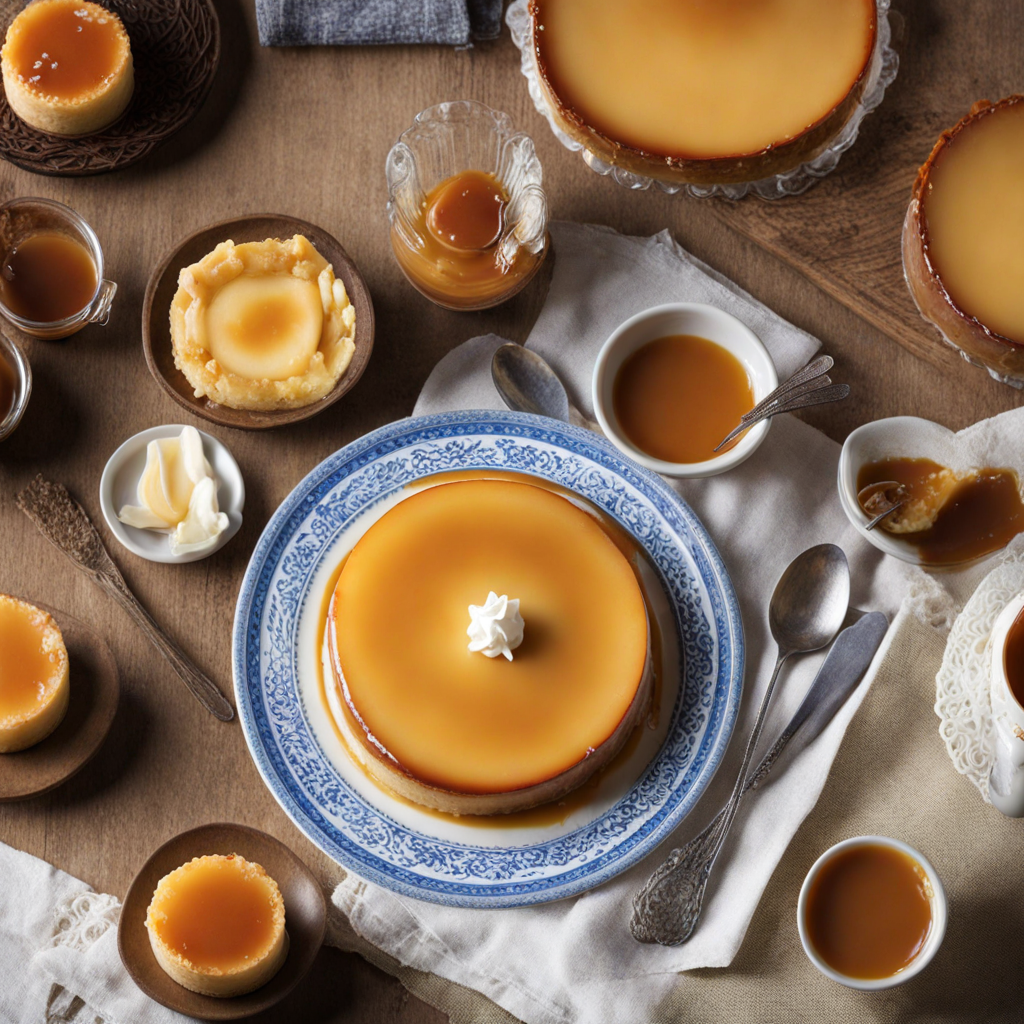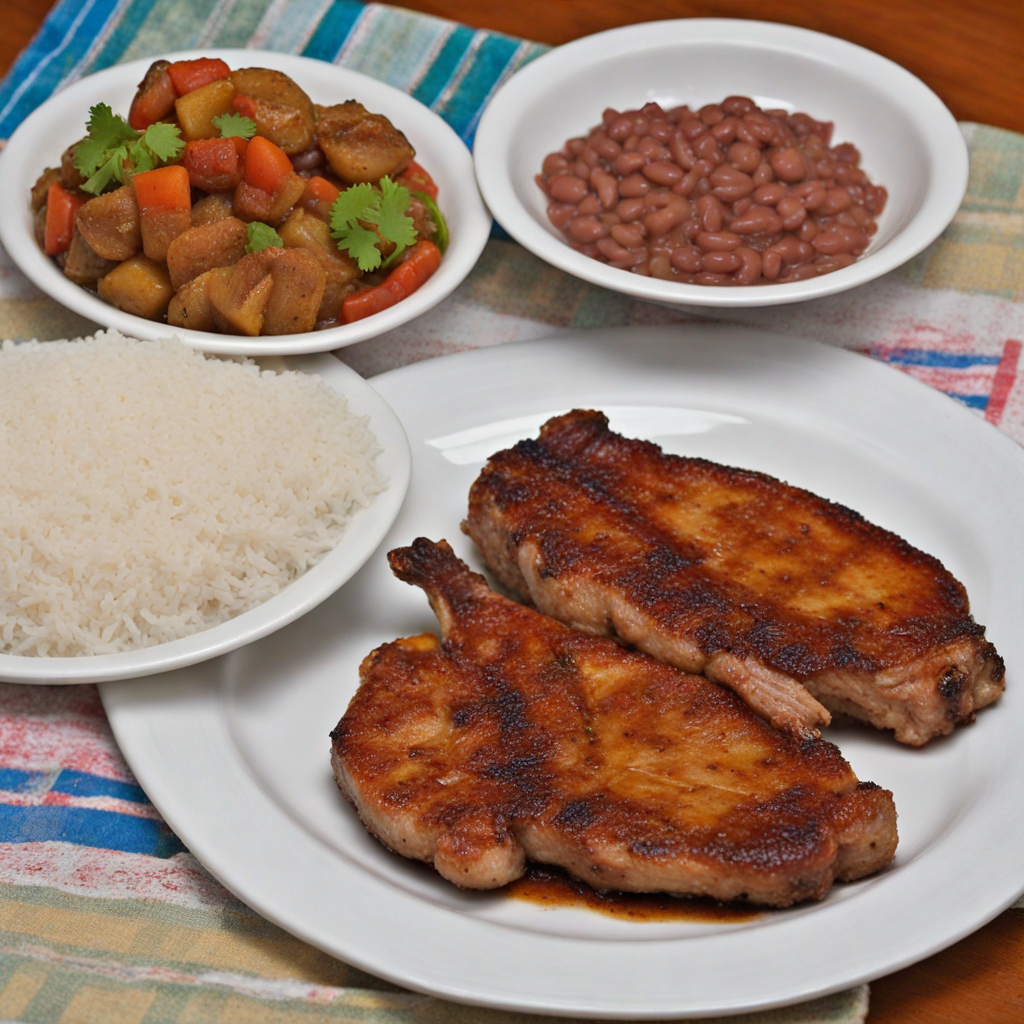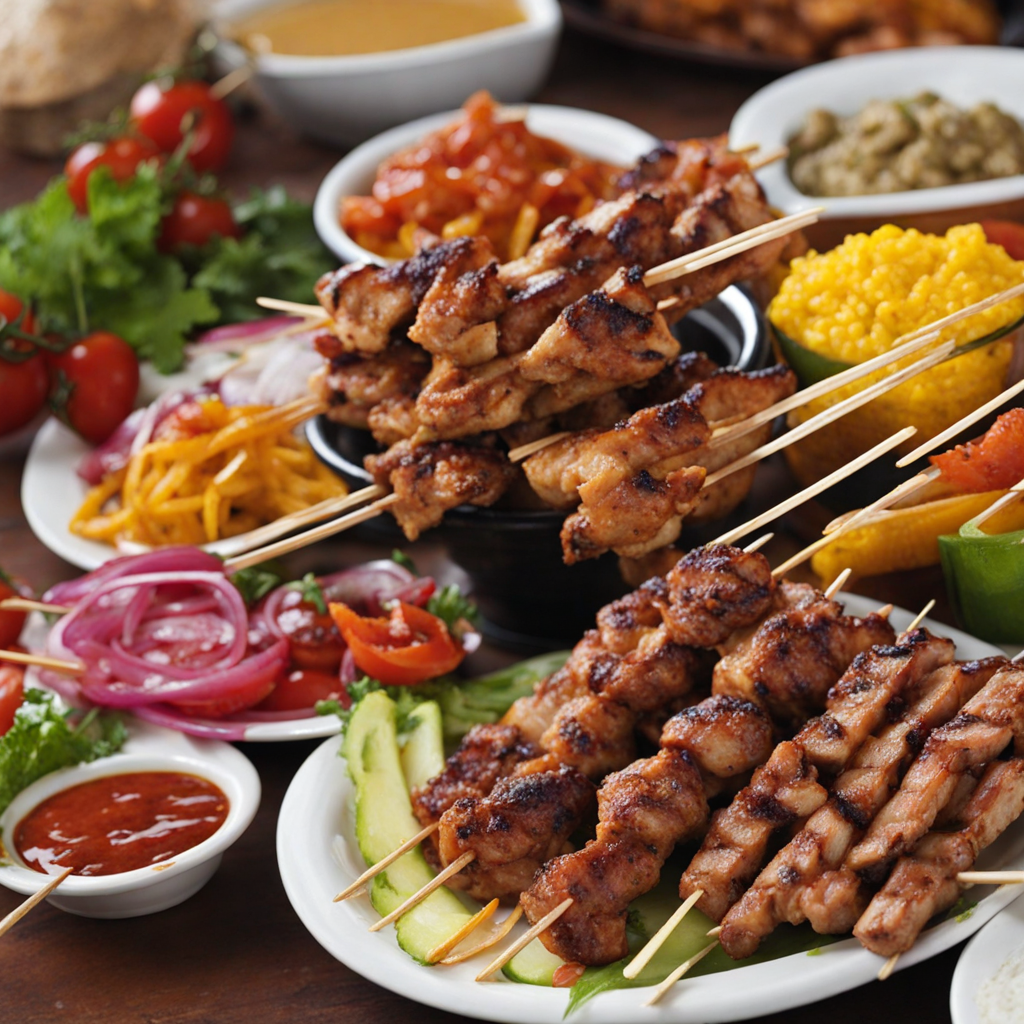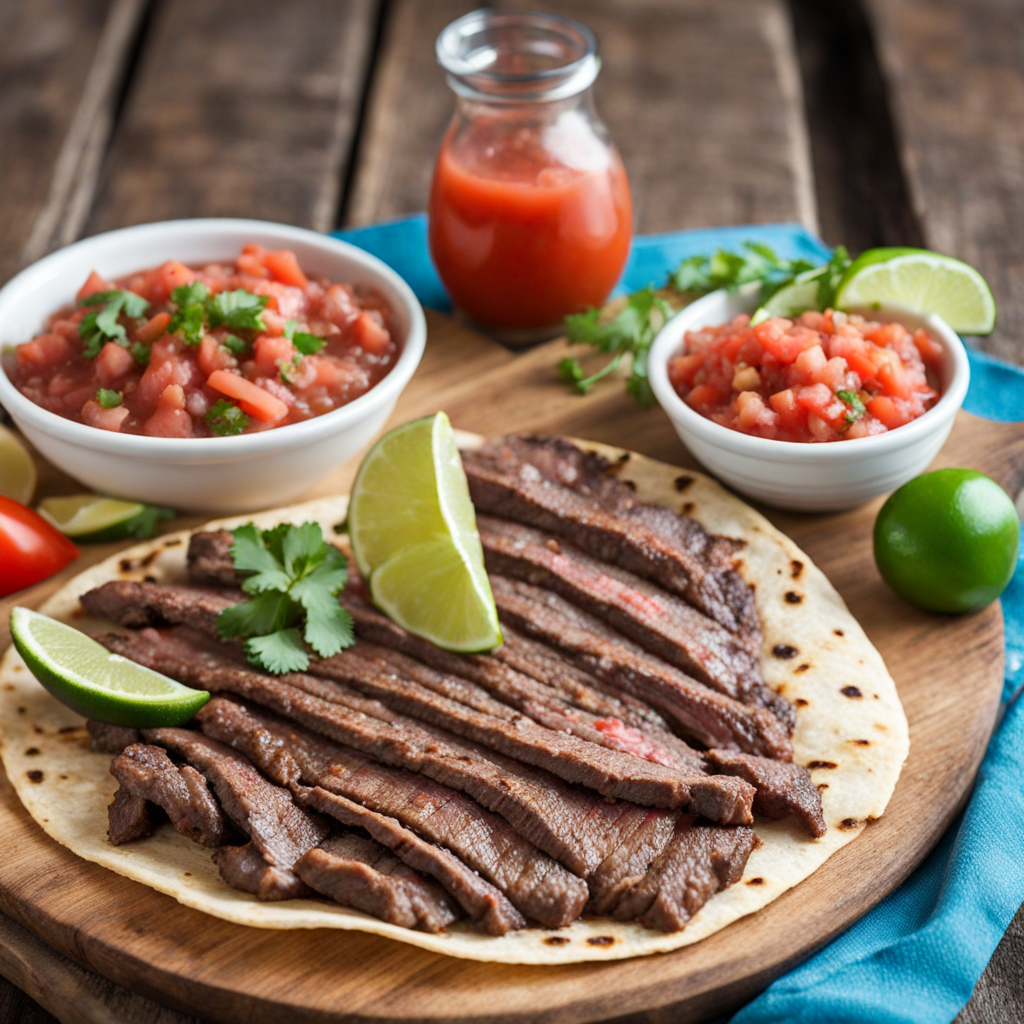Flan
Flan, a beloved dessert in Honduras, embodies a delightful blend of silky smoothness and rich flavors that captivate the palate. This traditional custard is crafted from a harmonious mixture of eggs, sweetened condensed milk, evaporated milk, and sugar, which come together to create a creamy base that is both indulgent and comforting. The flan is typically infused with a hint of vanilla, elevating its taste and aroma to new heights. Its elegant presentation, often topped with a glossy caramel sauce, adds a touch of sophistication that makes it a favorite for gatherings and special occasions. When you take your first spoonful, you'll experience the perfect balance of sweetness and creaminess that melts in your mouth. The caramel layer provides a luscious contrast, with its deep, slightly bitter notes enhancing the overall flavor profile. Each bite is a celebration of textures, moving from the velvety custard to the smooth, sticky caramel, leaving you craving more. This dessert not only satisfies your sweet tooth but also showcases the culinary artistry that goes into its preparation. Flan is more than just a dessert in Honduras; it is a cherished tradition that often brings families together. Whether served at birthdays, holidays, or casual family dinners, this dish holds a special place in the hearts of many. As you savor the flavors of Honduras through flan, you'll find yourself immersed in a cultural experience that reflects the warmth and hospitality of its people, making it a must-try for anyone eager to explore new culinary delights.
How It Became This Dish
The History of Flan in Honduras Flan, a beloved dessert in many Latin American countries, embodies a rich tapestry of cultural influences, historical significance, and culinary evolution. In Honduras, flan is not merely a dish; it is a sweet symbol of tradition, family, and heritage that has roots extending back centuries. Origins of Flan The origins of flan can be traced back to ancient civilizations. The word "flan" itself is derived from the Latin "flado," meaning "to bake." Its early forms were likely enjoyed by the Romans, who made a version of this custard-like dessert that incorporated eggs and milk, sweetened with honey. As the Roman Empire expanded, so did their culinary practices. With the fall of Rome, these recipes traveled through the Mediterranean and into the kitchens of the Iberian Peninsula. By the time the Spanish conquistadors arrived in the Americas, they brought with them their culinary traditions, including flan. The Spanish version of flan, known as "flan de huevo," typically incorporates caramelized sugar, eggs, and milk, creating a creamy custard with a smooth texture. The introduction of flan to Honduras and other parts of Central America was a part of the broader cultural exchange that occurred as Spain colonized the region. Cultural Significance in Honduras In Honduras, flan has become a staple dessert, symbolizing celebration and togetherness. Traditionally served during special occasions such as birthdays, holidays, and family gatherings, flan is more than just a treat; it embodies the spirit of sharing and hospitality that is integral to Honduran culture. The preparation and presentation of flan often involve family members coming together, passing down recipes and techniques from generation to generation. Honduran flan is often made with local ingredients, showcasing the country's agricultural bounty. While the basic recipe consists of milk, eggs, sugar, and vanilla, variations exist that reflect regional tastes and available resources. Some recipes incorporate coconut milk, which adds a unique tropical flavor, while others might introduce spices like cinnamon or nutmeg, further enhancing the dish's complexity. Development Over Time Historically, flan has adapted to the tastes and preferences of the people who prepare it. As Honduras evolved through colonial times, independence, and into the modern era, so too did its culinary landscape. The introduction of new ingredients, such as sweetened condensed milk, has transformed the traditional recipes, making them richer and creamier. This adaptation is a testament to the resilience and creativity of Honduran cooks, who have embraced innovation while honoring their culinary heritage. Moreover, the globalization of food culture has led to an interest in fusion cuisine, and flan is no exception. Chefs and home cooks alike have begun experimenting with flavors and textures, incorporating elements from other culinary traditions. For instance, the addition of chocolate or fruit purees has created exciting new interpretations of flan that appeal to contemporary palates. Flan has also gained recognition beyond its traditional roots. In the context of a broader Latin American culinary scene, it has become a beloved dessert featured in restaurants and cafes worldwide. This popularity underscores the importance of flan not just as a dessert but as a cultural artifact that carries with it the stories and traditions of the people who make it. The Recipe: A Culinary Tradition While flan recipes can vary, the core elements remain consistent. A typical Honduran flan recipe calls for: - Ingredients: - 1 cup sugar (for caramel) - 4 large eggs - 1 can (14 ounces) sweetened condensed milk - 1 can (12 ounces) evaporated milk - 1 tablespoon vanilla extract - Instructions: 1. Preheat the oven to 350°F (175°C). 2. In a saucepan over medium heat, melt the sugar until it turns golden brown, swirling the pan to ensure even cooking. Carefully pour the caramel into a round baking dish, tilting the dish to cover the bottom evenly. 3. In a bowl, beat the eggs. Add the sweetened condensed milk, evaporated milk, and vanilla extract, mixing until smooth. 4. Pour the egg mixture over the caramel in the baking dish. 5. Place the baking dish in a larger pan filled with hot water (a water bath) to prevent the flan from cooking too quickly. 6. Bake for about 50-60 minutes, or until set. Allow it to cool before refrigerating for at least 4 hours or overnight. 7. To serve, carefully invert the flan onto a plate, allowing the caramel to cascade over the custard. This recipe encapsulates the essence of Honduran flan: simple yet exquisite, reflecting both tradition and the warmth of familial love. Flan Today: A Modern Perspective In contemporary Honduras, flan remains a cherished dessert, yet its role has expanded. With the rise of social media and food blogs, flan recipes are shared and celebrated in new ways, allowing for creativity and personalization. Home cooks and professional chefs alike showcase their versions of flan, often emphasizing the local ingredients and unique culinary techniques that make their flans stand out. Moreover, flan’s versatility extends beyond being a dessert. It can be incorporated into various dishes, such as flan cakes or flan parfaits, showcasing its adaptability within the ever-evolving culinary landscape. Conclusion Flan in Honduras is more than just a dessert; it is a representation of history, culture, and community. From its ancient origins to its modern iterations, flan has woven itself into the fabric of Honduran life, celebrating traditions while embracing innovation. Whether enjoyed at a family gathering or in a fine dining establishment, flan continues to evoke memories, create connections, and delight the senses. As it evolves, flan will undoubtedly remain a sweet reminder of the rich culinary heritage of Honduras and the enduring importance of family and tradition in every luscious bite.
You may like
Discover local flavors from Honduras







